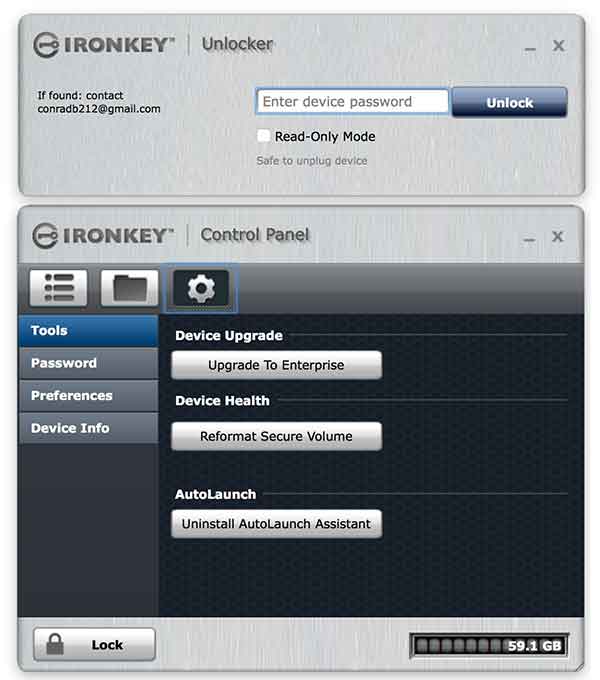

Meeting the most stringent standards for military-grade strength and durability, the drive is built with an anodised aluminium enclosure and epoxy-filled casing. Basic modelĪvailable in 4 GB to 128 GB¹ capacities, the S1000 basic model provides fast USB 3.0² performance and enhanced, hardware-based security without compromise. The drive locks down after ten invalid password attempts and there is also the option to reformat or destroy the drive. For added peace of mind, the drive uses digitally-signed firmware that makes it immune to BadUSB. The drive detects and responds to physical tampering and provides automatic data protection upon drive removal.

Safeguard 100 per cent of confidential data with 256-bit AES hardware-based encryption, in XTS mode, and FIPS 140-2 Level 3 validation with on-device Cryptochip Encryption Key management. In the last part of the talk I will present my own recent results in hardware security research.Kingston’s IronKey S1000 meets the strictest standards to make it the ultimate security drive. Semi-invasive optical probing and fault injection attacks, in which the chip is depackaged but the pa ssivation layer remains intact, fill the gap between non-invasive and invasive types, being both inexpensive and easily repeatable. However, these normally require expensive equipment, knowledgeable attackers and time. Invasive atta cks, such as reverse engineering followed by microprobing or FIB editing, give almost unlimited capabilities to extract information from chips. Nevertheless, security holes in designs an d careless dealing with confidential information can lead to such attacks. The large complexity of modern chip s leaves less room for non-invasive attacks. However, insider information about device functionality can be helpful. Non-invasive techniques, such as timing, power or e lectromagnetic analysis, glitch attacks or exploits of data remanence, require only moderately sophisticated equipment and knowledge to implement. Three classes of physical attacks can be distinguis hed by the way the device is accessed. I will survey the area of hardware security and dis cuss the progress in attack technologies and protections. Hardw are engineers should be well familiar with attack technologies in order to design a syste m with appropriate level of security protection at a minimal cost. confidentiality and integrity of the information stored inside the security chips. These applications demand a high level of security protection from various attacks against. In the last five years, dedicated crypto chips have been embedded in devices from game console accessories to printer ink cartridges and mobile phone batteries. Major applications, such as mobile phone identifica tion and pay-TV receivers, have pushed low-cost crypto-processors toward everyday use.


 0 kommentar(er)
0 kommentar(er)
